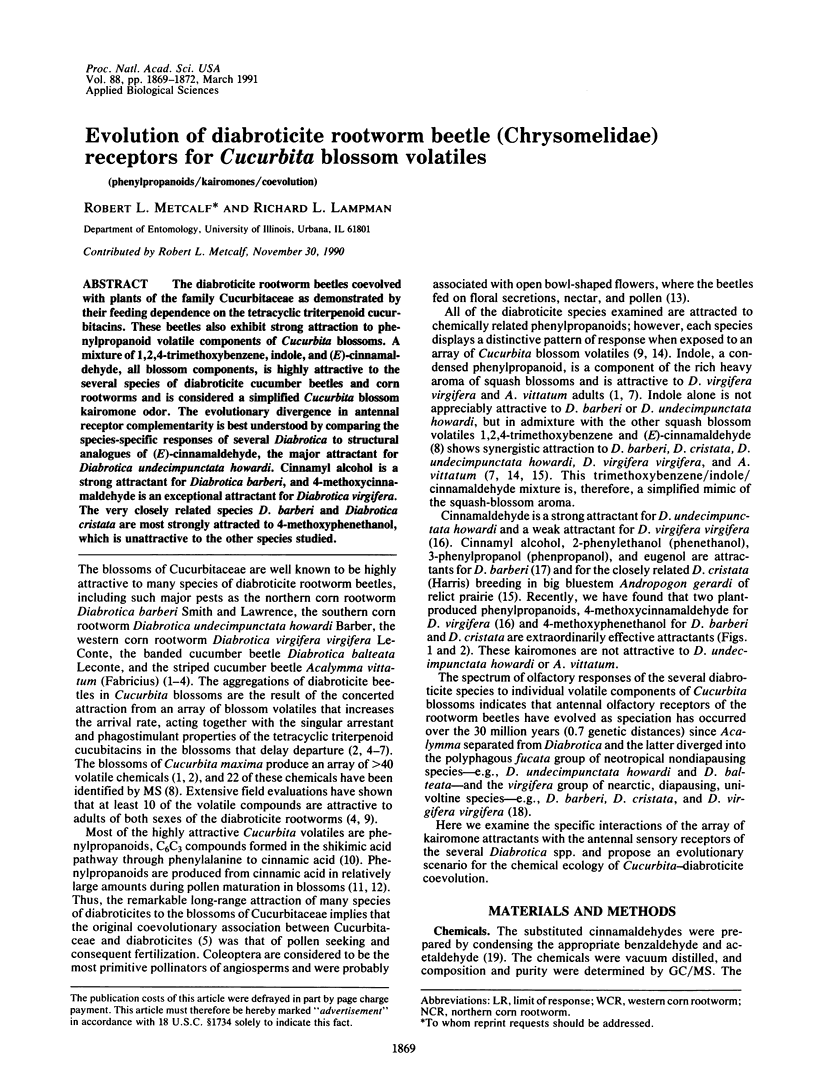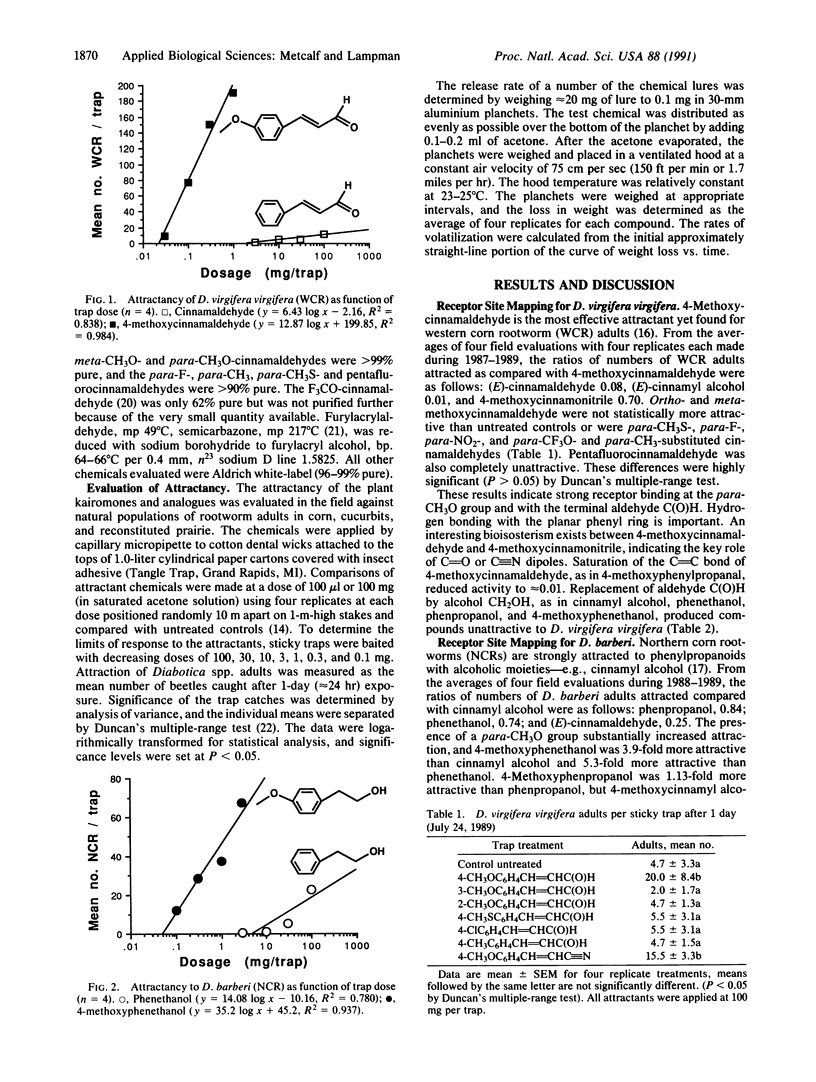Abstract
The diabroticite rootworm beetles coevolved with plants of the family Cucurbitaceae as demonstrated by their feeding dependence on the tetracyclic triterpenoid cucurbitacins. These beetles also exhibit strong attraction to phenylpropanoid volatile components of Cucurbita blossoms. A mixture of 1,2,4-trimethoxybenzene, indole, and (E)-cinnamaldehyde, all blossom components, is highly attractive to the several species of diabroticite cucumber beetles and corn rootworms and is considered a simplified Cucurbita blossom kairomone odor. The evolutionary divergence in antennal receptor complementarity is best understood by comparing the species-specific responses of several Diabrotica to structural analogues of (E)-cinnamaldehyde, the major attractant for Diabrotica undecimpunctata howardi. Cinnamyl alcohol is a strong attractant for Diabrotica barberi, and 4-methoxycinnamaldehyde is an exceptional attractant for Diabrotica virgifera. The very closely related species D. barberi and Diabrotica cristata are most strongly attracted to 4-methoxyphenethanol, which is unattractive to the other species studied.
Full text
PDF



Selected References
These references are in PubMed. This may not be the complete list of references from this article.
- Bossert W. H., Wilson E. O. The analysis of olfactory communication among animals. J Theor Biol. 1963 Nov;5(3):443–469. doi: 10.1016/0022-5193(63)90089-4. [DOI] [PubMed] [Google Scholar]
- Friedrich H. Phenylpropanoid constituents of essential oils. Lloydia. 1976 Jan-Feb;39(1):1–7. [PubMed] [Google Scholar]
- Fultz M. J., Finkelman F. D., Metcalf E. S. Comparison of the clonal diversity of the B cell repertoires in adult mice that differ in the expression of cell surface IgD. Eur J Immunol. 1987 Aug;17(8):1137–1143. doi: 10.1002/eji.1830170810. [DOI] [PubMed] [Google Scholar]
- Metcalf R. L., Metcalf R. A., Rhodes A. M. Cucurbitacins as kairomones for diabroticite beetles. Proc Natl Acad Sci U S A. 1980 Jul;77(7):3769–3772. doi: 10.1073/pnas.77.7.3769. [DOI] [PMC free article] [PubMed] [Google Scholar]
- Mollov N. M., Ivanov I. C., Georgiev V. S., Panov P. P., Kotsev N. Phytochemical investigation of the flowers of Thalictrum rugosum. Planta Med. 1970 Oct;19(1):10–15. doi: 10.1055/s-0028-1099797. [DOI] [PubMed] [Google Scholar]


